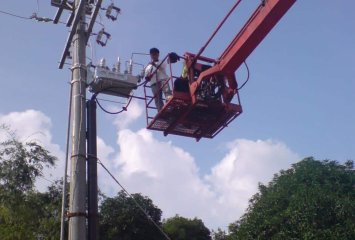

The Manlift Inspection Training course is designed to provide participants with the knowledge and skills necessary to conduct thorough inspections of manlifts (also known as aerial work platforms or mobile elevated work platforms). This course covers essential safety regulations, inspection procedures, and maintenance requirements to ensure that manlifts are safe to operate and comply with industry standards. Participants will learn how to identify potential hazards, perform routine checks, and understand the critical components that must be inspected to maintain the equipment’s safe functioning.
Understand Safety Standards and Regulations: Gain knowledge of OSHA, ANSI, and other relevant safety standards governing the use and inspection of manlifts.
Identify Key Components of Manlifts: Learn about the critical components of manlifts, including structural, electrical, hydraulic, and safety systems.
Perform Inspections: Be able to conduct a thorough pre-use inspection, identifying potential issues and ensuring compliance with safety standards.
Diagnose Common Issues: Learn to recognize common problems with manlifts and understand their potential risks.
Document Inspections: Understand the importance of accurate inspection records and how to properly document the findings.
Comply with Maintenance Protocols: Gain insight into basic maintenance procedures to keep manlifts in good working condition and minimize downtime.
Implement Corrective Actions: Learn how to take the appropriate steps if a defect or issue is identified during an inspection.
Introduction to Manlifts
Types of manlifts (e.g., scissor lifts, boom lifts, vertical lifts)
Key components of manlifts
Purpose and applications of manlifts in various industries
Regulatory Standards and Compliance
Overview of OSHA and ANSI standards for manlift operations and inspections
Importance of safety regulations
Legal and employer responsibilities regarding equipment inspections
Pre-Use Inspections
Step-by-step inspection process
Identifying potential hazards before use
Checklist for inspecting the mechanical, electrical, and hydraulic systems
Visual and functional inspections
Tires and tracks
Boom and platform condition
Safety harnesses and emergency descent systems
Controls and alarms
Detailed Components and Systems Inspections
Structural integrity checks (boom, platform, chassis)
Hydraulic system inspection
Electrical system checks
Safety features and functions (emergency lowering, tilt alarms, etc.)
Module 5: Diagnostic Procedures
Common problems with manlifts and their signs
Identifying wear and tear
Troubleshooting mechanical, electrical, and hydraulic issues
Inspection Documentation and Reporting
Importance of accurate inspection records
How to document findings, issues, and corrective actions
Using inspection checklists and digital tools
Reporting and escalating unresolved issues
Corrective Actions and Maintenance Protocols
Maintenance best practices for manlifts
Addressing minor repairs vs. major repairs
When to call for professional maintenance
Corrective action plans and follow-up inspections
Final Assessment and Review
Quiz to assess knowledge gained throughout the course
Review of key takeaways
Q&A session
Equipment Operators
Maintenance Personnel
Safety Officers
Supervisors and Managers
Rental Company Staff
Construction and Industrial Workers